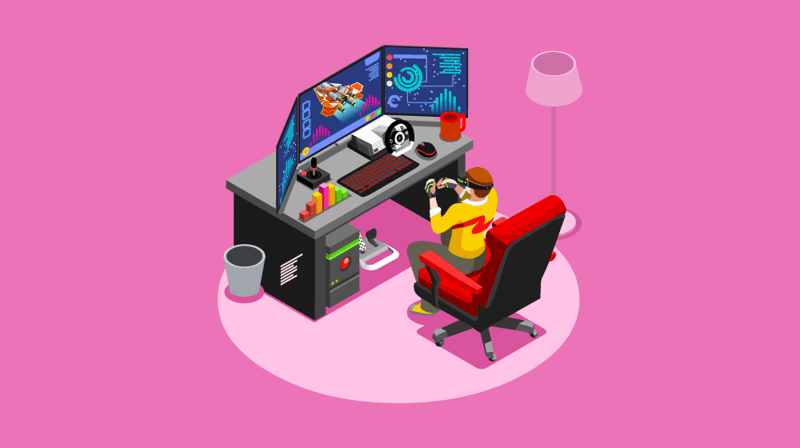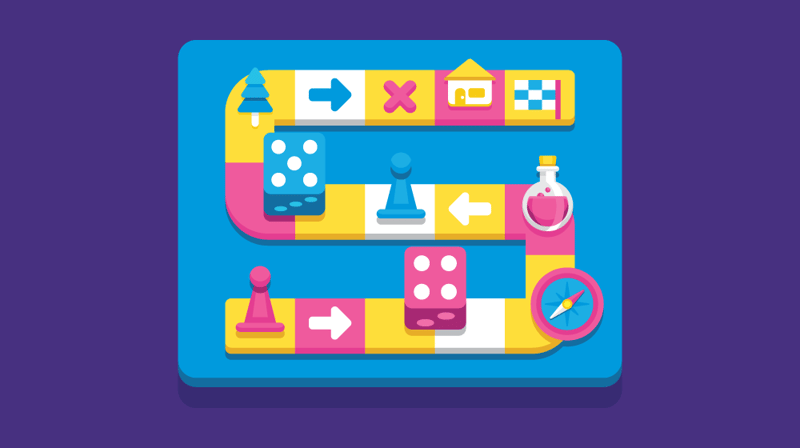Gamification is quickly becoming a buzzword within many professional environments, and the field of student affairs is no exception.
The impact of good gamification design in the workplace is pretty incredible. Improvements in productivity and sales measure up to 60%, employees are more satisfied and engaged, and highly skilled employees are more likely to be retained, just to name a few of the top impacts.
And these benefits are easily transferable to students! With college enrollment numbers declining nationwide and our need to redefine engagement and success for a new generation of students, we could use some TLC in the form of gamification.
A Brief History of Gamification
The idea of adding game-like elements to tasks in order to promote learning is not new. Researcher Charles Coonradt has been interested in this topic since the mid-eighties when he published The Game of Work. His original research examined why people work harder at sports and other voluntary hobbies than at their jobs.
“Why would people pay for the privilege of working harder at their chosen sport or recreational pursuit than they would work at a job where they were being paid?”
Coonradt found five main reasons, namely that people crave clearly defined goals, better scorekeeping and scorecards, more frequent feedback, a higher degree of personal choice of methods, and consistent coaching.
This research provides the foundation for what gamification looks like today. Examples include badging programs, point-tracking, virtual or physical rewards, public leaderboards, and leveling up.
Modern-Day Gamification
There have been many significant innovations in the gamification industry since the mid-eighties. I wanted to highlight a few notable contributions, including Yu-Kai Chou’s more in-depth and actionable gamification framework called Octalysis.
Also worth mentioning is Modern Campus Involve, which utilizes digital incentives, points, level-ups, and more — all to gamify involvement and keep students motivated, engaged, and aware of the connection between co-curricular involvement, learning, and workforce readiness.
Finally, it’s interesting to note that many human resources departments are also incorporating gamification practices into training and employee development. Employees say that gamification elements makes them feel more productive (89%) and happier (88%) at work and believe they would be more productive (89%) if their work was gamified more.

Most importantly, however, there continues to be an increase in the perceived positive impact gamification has on employee psychological measures — like motivation, engagement, sense of belonging, and purpose.
I also recommend watching gamification author and entrepreneur Gabe Zichermann’s TEDxVilnius talk “The Future of Creativity and Innovation is Gamification”, in which he discusses other modern-day gamification examples. He also examples how leaders are leveraging this strategy to accomplish some pretty impressive feats and soar past their competition.
The question is no longer “is gamification an asset to companies or valuable as a learning tool?” We now need to be asking “what type of gamification should we implement to keep students engaged and happy?”
3 Gamification Tips
1. Establish and enforce clear, defined goals
Having a clear goal or win-condition is crucial in gamification design.
However, it’s not enough on its own; including a backstory or theme, along with the goal or objective and necessary rules, can be a fun way for students to connect with the material. It can also provide additional context for learning outcomes.
Consider including a short paragraph with your assignments that tells a little story or creates a scene in the students’ minds. You can expand upon this by creating badges or rewards to incentivize participation or even implementing a full-fledged syllabus that connects all the activities with the world or story you are building.
This can be completely fantastical (such as turning educators into Dungeon Masters), a modification of a real-world context (like using Angry Birds to teach students about complex math topics or mimicking a zombie apocalypse to train for a 5K), or an adaptation of a popular game, book, or movie (think Pokémon GO).
Go all-out and add graphics and references from your story to handouts, presentation slides, decorations, and more.
The student employment program at my institution, Northern Arizona University, recently won the Career Innovation Showcase award from the Career Leadership Collective for our innovative career initiatives and contributions to scaling career services.
Charged with establishing processes, tools, and templates for a workforce of nearly 4,000 people, our team looked to NACE’s Career Readiness Competencies to anchor the program and successfully embedded competencies throughout the student employee life cycle.
We even managed to gamify career-readiness conversations by creating a set of collectible coaching cards based on the competency areas. This has helped better prepare student employees for their futures after graduation.
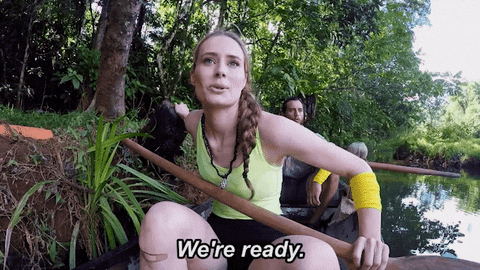
The important thing to remember here is that gamification is most successful when students are able to be creative within some constraints (think Minecraft or building Legos). Keep in mind that the boundaries you design will ensure that students stay focused and engaged.
2. Utilize and improve scorekeeping and scorecards to track progress
Another smart gamification tactic for student affairs professionals is to feed into the instant gratification we know students crave.
This is where things like badging and tangible rewards come into play. Mirroring these game elements and tapping into different motivational types (with things like material rewards and visible accomplishment trackers) helps students feel like they are progressing toward levels of mastery.
“Leveling up” is one particularly popular strategy. Lee Sheldon, a professor in the Department of Telecommunications at Indiana University, gamified one of his courses by replacing traditional grades with an “experience points” system.
Sheldon starts every student at zero experience points (zero EXP). They can then earn points through the completion of “quests” — things like individual projects, quizzes, reflection papers, and group activities. At the end of the course, students’ accumulation of EXPs determines their grade.
This type of scorekeeping and progress-tracking is also a great way to stir up a little friendly competition outside of the classroom.
Digital badging programs, like Adobe Certifications and LinkedIn skill quizzes, reward the hard work and time users put into learning new things. Digital badging programs also showcase achievements in a public, professional, and meaningful way by integrating with social media.
As a self-proclaimed gamification nerd, I’m very excited to bring this strategy to my own institution. We’re working to launch a digital badge program to highlight students’ completion and knowledge acquisition of career readiness curricula, create ways to link achievements to their social media profiles, connect skills developed with prospective employers, and more!
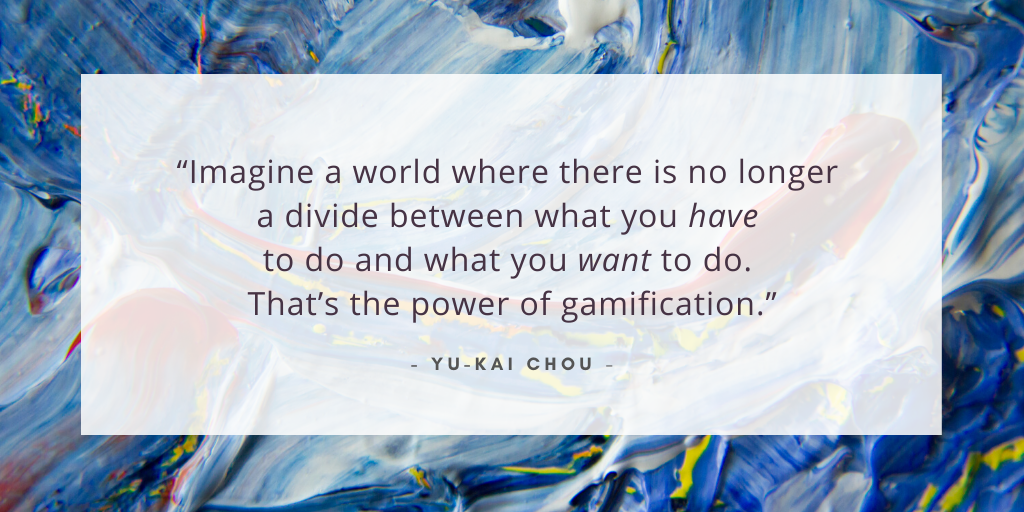
Beyond badges and credentials, there are countless free web-based resources (with additional functionalities via premium subscriptions) that can help you incorporate scorekeeping and progress-tracking leaderboards.
Chore Wars is an online platform that allows users to create customized avatars, complete duties and chores, and earn EXP for being the first to log a completed task. You can even set up recurring tasks with diminishing EXP values or make one-time events that are first come, first served.
This is a wonderful tool that I’ve used as an RA to engage new roommates in establishing proper hygiene and tracking habits. I’ve also thought about using Chore Wars to award treats for completing activities and leveling up or to allow students to spend in-game gold pieces on real, tangible prizes.
Kahoot! is another popular service that offers pre-made games, quizzes, and interactive activities to measure learning outcomes. I have created several interactive Kahoot! quizzes in my current role, including a pre-resume workshop knowledge check, a university resources quiz for student math coaches, and a student leadership conference presentation activity about turning weaknesses into strengths.
GooseChase allows users to set up scavenger hunts composed of missions. Each mission involves a clue that leads students to complete an objective and submit their responses as photos, videos, text responses, or geotagged locations. I’ve used GooseChase to gamify campus tours as a part of new employee onboarding and for various student social events downtown.
The key takeaway here is that we need to leverage the many excellent tools available to gamify our current practices. That way, we can make tasks and assignments feel rewarding and developmental, rather than mundane and disheartening.
3. Cultivate more feedback and personal choice
How do we communicate the “why?” or the “WIIFM?” (what’s in it for me?) behind these gamification efforts to our students?
The solution lies in getting students involved in creating their own stories. In other words, we need to include them in discussions about defining learning outcomes.
I believe that a popular series of children’s horror fiction novels from the mid-nineties shows us how to do this.
The Give Yourself Goosebumps series utilizes a modular learning design framework, which allows readers to interact with the plot. Actor and entertainer Neil Patrick Harris took this concept a step further when he released his memoir, Neil Patrick Harris: Choose Your Own Autobiography, which allowed the reader to choose which path for Neil to follow as you learn about his life.
As the examples above illustrate, by creating a central story framework with built-in flexibility for decision-making and multiple paths toward the same outcome, you can create an illusion of customization and formulate an experience that is unique, yet scalable.
Many of us likely already do this without realizing it.
For example, we might utilize the same core framework but verbally adjust a workshop or presentation to be audience-specific. And we might customize our agendas for one-on-ones with students in order to best fit their individual needs.
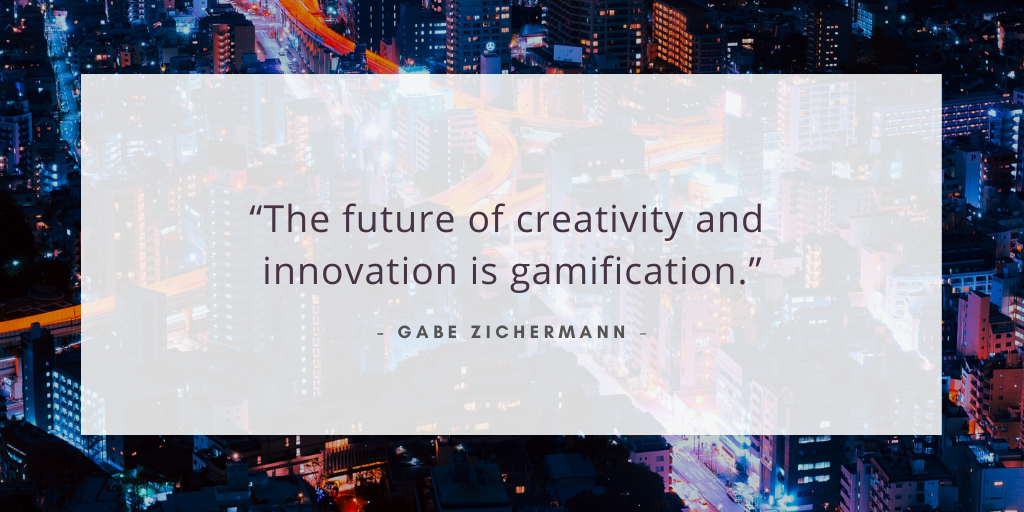
This type of gamification is also attainable on a larger scale. My institution utilizes Kognito — an interactive, web-based training aimed at helping students, staff, and faculty identify students in mental distress. The program has proven effective in increasing student intervention efforts when their peers have exhibited signs of depression or suicidal ideation.
Kognito utilizes avatar-based technology and allows users to assume the role of someone who is concerned about several students. Users first analyze the profiles of these virtual students to identify who is most at risk. Then, users engage the virtual students in simulated conversations — with multiple decision trees and triage opportunities — to determine whether (or not) to refer them to various campus and community resources… and how to do so.
With so many great tools and resources at our fingertips, it’s easy to incorporate gamification strategies into our everyday work.
As the needs of students continue to evolve, so must we. I am excited to see how gamification shapes the future of creativity and innovation for students and professionals alike.
How do you use good gamification design to recruit, engage, and retain your students? Let us know by tweeting us @themoderncampus and @Velocirathbone.


